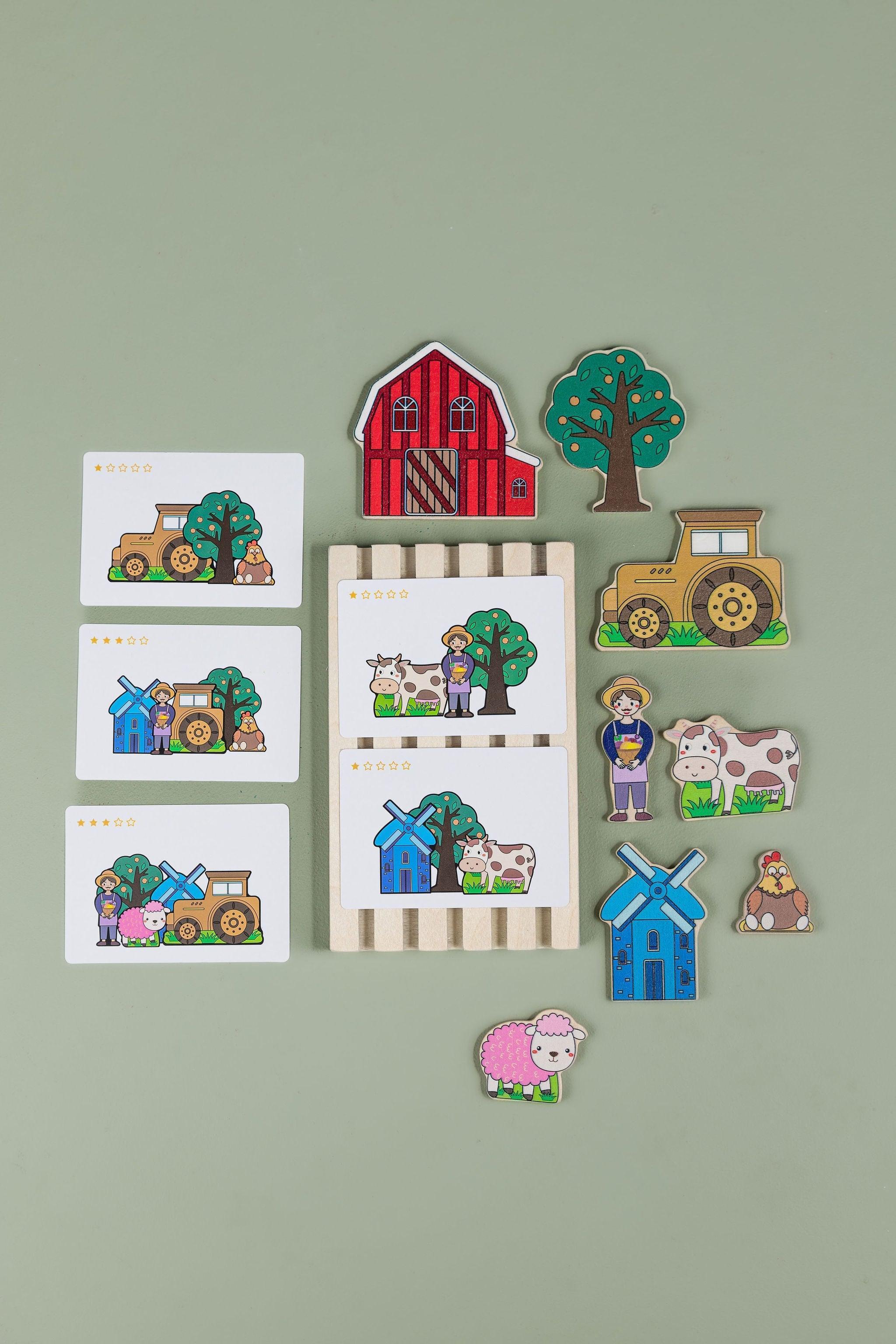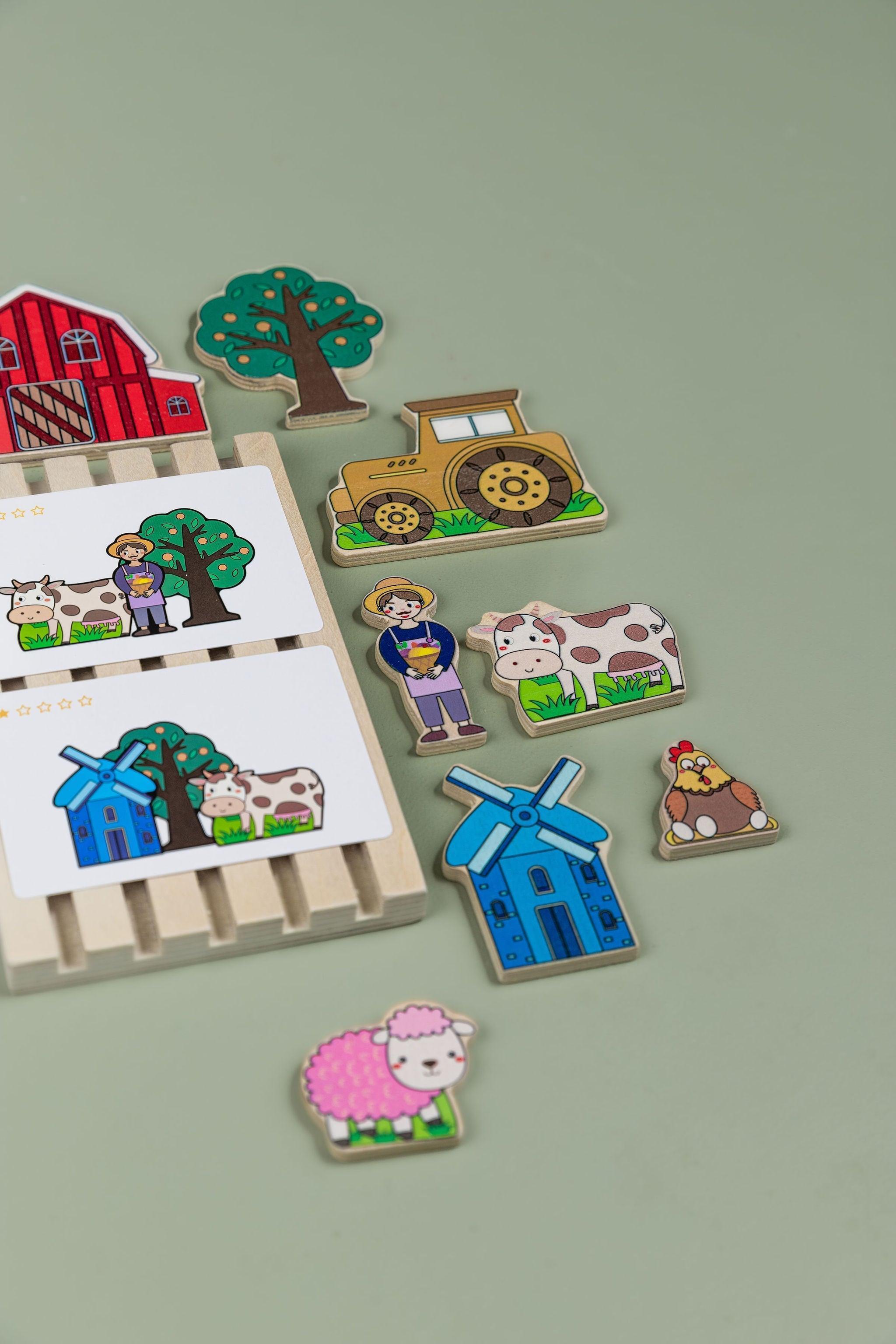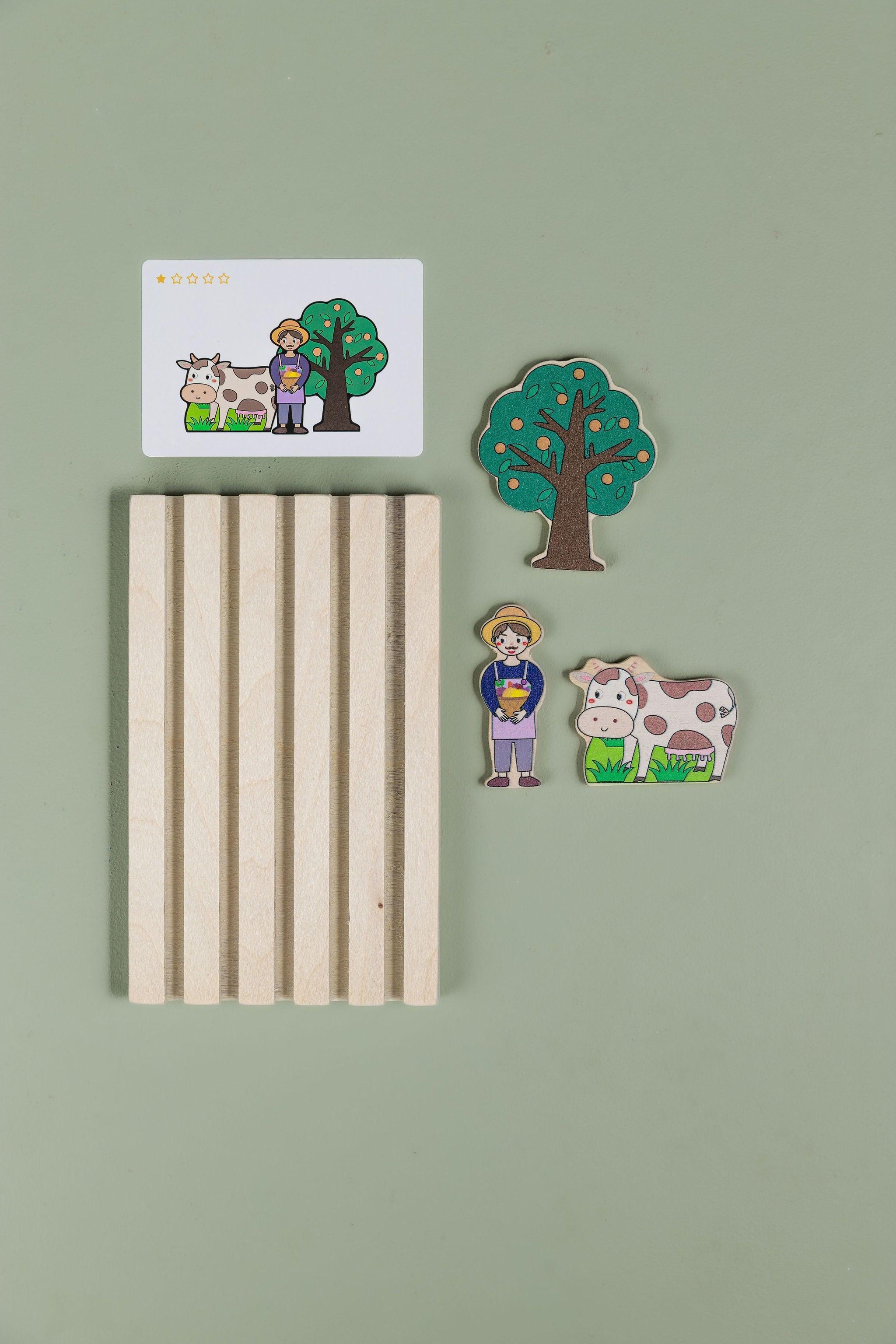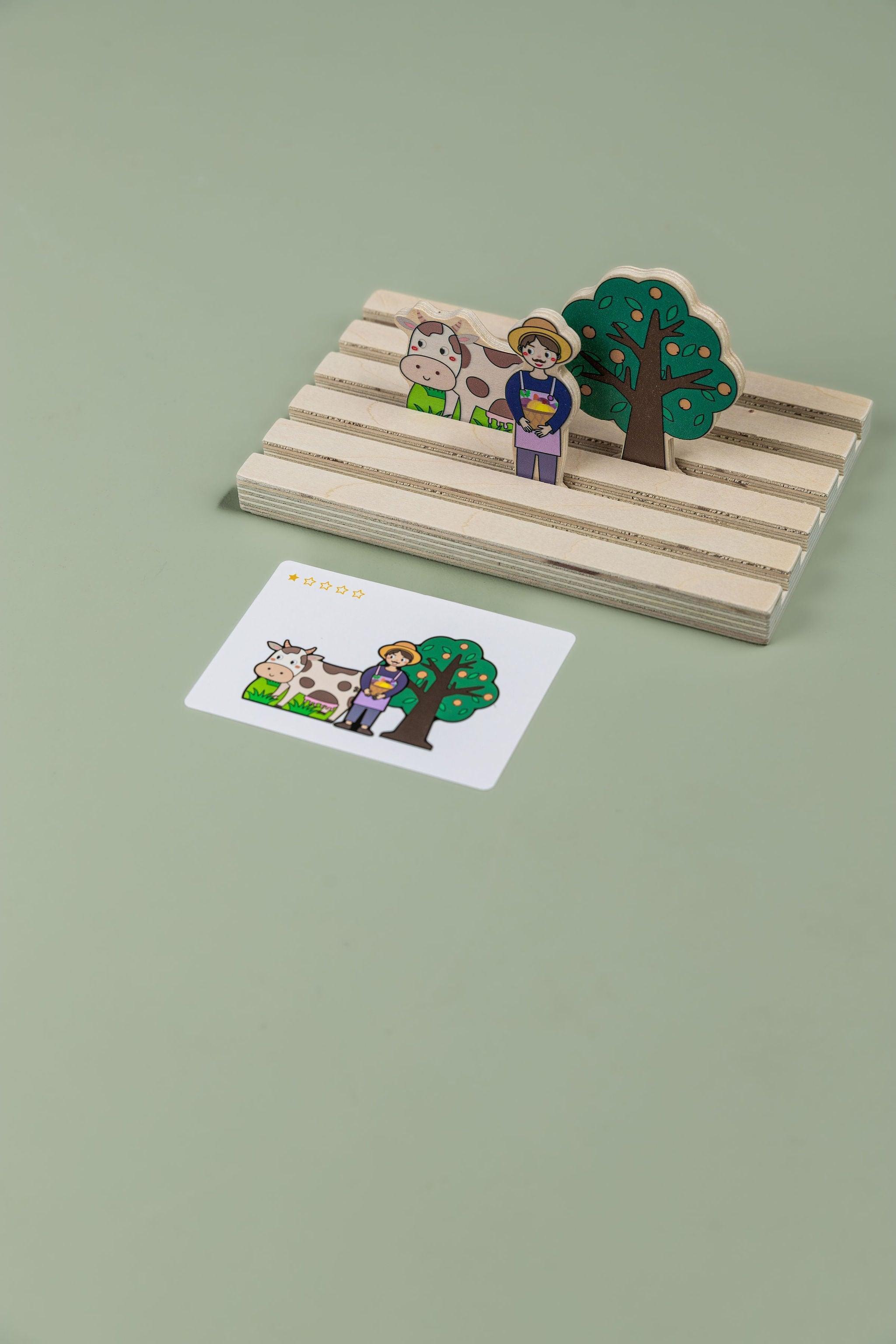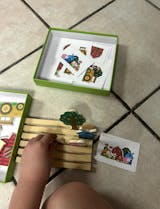3D Figure Ground Puzzle: Farm
Understanding position in space is crucial for a child's development as it enhances spatial awareness, problem-solving, and cognitive skills. Our 3D figure ground puzzle, with varying pieces helps children grasp concepts of size, distance, and relative positioning.
What's included:
- Base piece measuring 11cm x 17.5cm
- Cards measuring 10cm x 7cm
- Wooden tiles range from small, medium and large.
What our OT says:
I have used this game a lot and it has been a favourite for our 5-6 year olds. Here is why:
Consistent Use of Positional Terms: Utilise terms such as "front", "middle", "back", "in front of", "behind", and "next to" consistently throughout the activity to reinforce spatial understanding and language comprehension.
Moddeling and Imitation: Begin by creating a scene on the base and encourage the child to replicate it if building from a 2D model is challenging. This helps develop visual-spatial skills and fosters imitation abilities.
Encouraging Creativity: Allow the child to create their own picture and describe it using positional terms. This promotes imagination, language development, and reinforces spatial relations.
Questioning and Engagement: Create scenes and ask questions such as "What is behind the bushes?", "Where is the cat?", and "What is next to the house?" This encourages observational skills, critical thinking, and spatial awareness.
Adaptive Positioning: If the child struggles to build from a flat card on the table, prop the card upright. This alternative setup can facilitate easier visual reference and manipulation.
Shape Identification: Turn pieces over so the child can identify them by shape only. This activity enhances visual discrimination and shape recognition skills.
Verification and Correction: Ask the child to assess if their finished scene matches the pattern card. Guide them through checking each piece location against the card, encouraging them to identify and correct any discrepancies independently.
Sequential Instructions: Start with placing one piece on the board and provide verbal directions for subsequent pieces (e.g., "Put the house in the middle" and "Place the car next to the house"). This supports sequencing skills and spatial reasoning.

